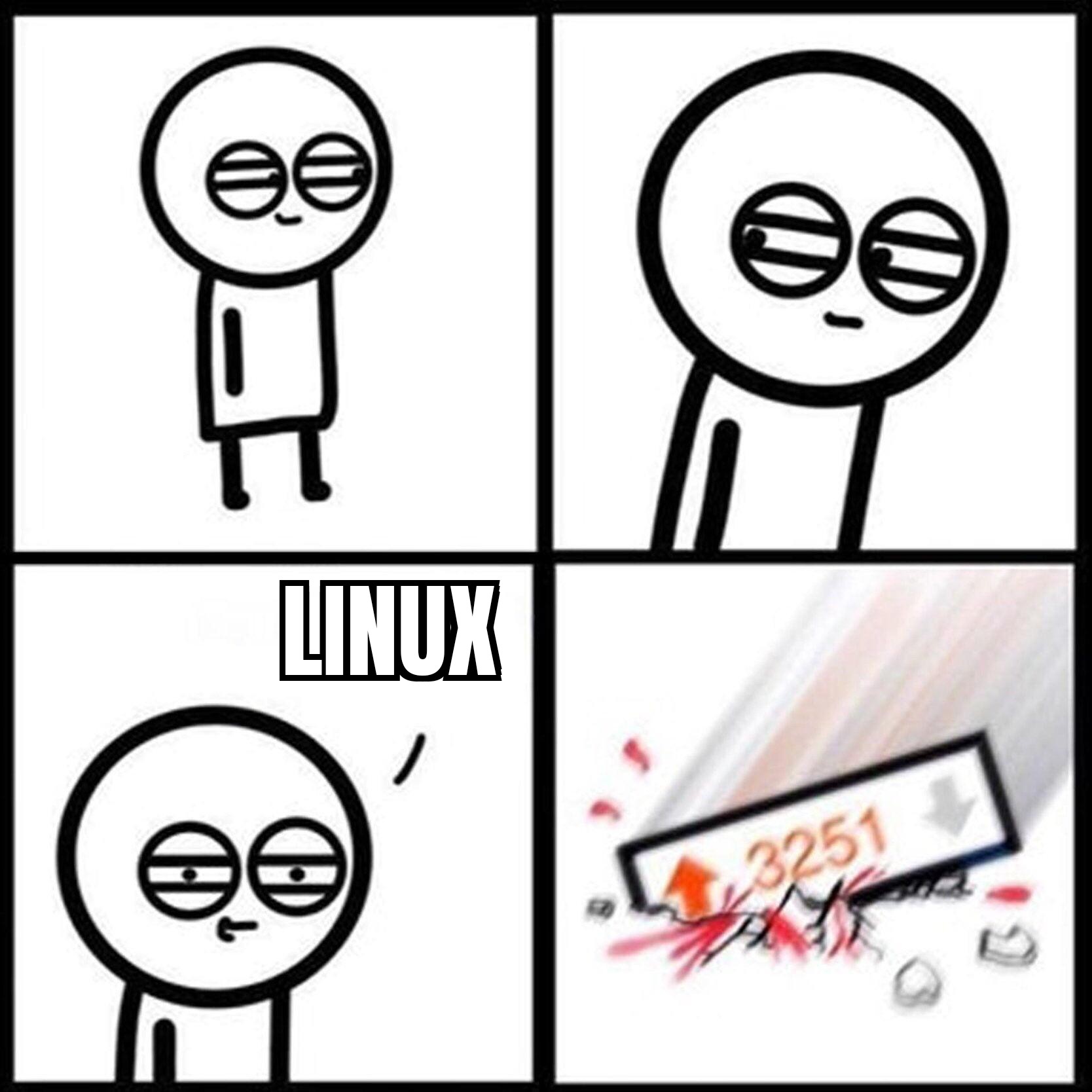image caption: A Microsoft Windows screen showing “Active Hours” with start time set to 12 AM and end time set to 12 AM and an error that says “Choose an end time that’s no more than 18 hours from the start time”.

You know. It’s interesting. I’ve been trying out Debian 12 with KDE Plasma. It actually has been a joy and feels like what Windows 11 should have grown into, had Microsoft actually been designing software with the customer in mind.
…but then there have been times where things so easily critically break until you fix them. Don’t get me wrong. I’ll go mess with kernel code if I have to, so I’m comfortable, but… I just want my computer to work. Windows, for all its shittiness, still keeps working through it like a slow cargo train pushing through a park piled in millions of pancakes.
I had one event the other day where I was installing a Snap app for the first time. Decided rather than installing the Snap package manager because I wanted to avoid Canonical if possible, I’d just manually put it in /opt. Figured out how to edit the KDE “start” menu to add the app using the included GUI tool. Wanted to use the app’s icon. The snap app had an icon embedded in it that Dolphin file manager recognized and displayed.
So I went, “ok, sometimes applications can parse out images from binary files. I’ve seen this work for decades,” so I tell the menu editor to ingest the snap binary for the icon, to see if it will scrape the icon. No icon showed up, so I found a a svg online and assigned that to the icon.
Then I went and saved and launched another application.
GUI slowly started not working and eventually the entire OS locked, even the alt text consoles would not load. Ctrl+alt+backspace was dead, caps lock died, which was when I knew, “he’s dead, Jim.”
Tried rebooting, tried launching that program again, (bearing in mind, not the program I manually added to the “start” menu) and every time the whole OS freezes up. Tried launching apps in different order, launching from command line, etc. When the one app launched that wasn’t the one I created a launcher icon for, same thing. Freeze. (It is possible that the bug is in fact time-based or boot-sequence-based, and since I was trying to reproduce the bug rapidly, the other app had nothing to do with it.)
I go remove the start menu link, hoping that, what I assumed was part of Plasma was trying to load this binary as an icon even though it should have checked the file, recognized it as “no I can’t parse this,” and done nothing or displayed an error or parsed it and showed the icon. Especially after I assigned it another image. I just hoped whatever screwed up would be connected to the code executing that app launcher icon config, and deleting the config for that application would delete whatever mess that was created, and hopefully was created discretely.
Shit you not, the computer became rock solid stable again after that and one more reboot. Hasn’t glitched since.
It’s shit like that that makes me proooobably give up on this experiment and end up on a commercial OS like MacOS again despite the cost and downward trend they are also suffering in a lack of innovative energy.
With respect, you can screw up Windows by doing things in a non-standard way too. That’s not the fault of the OS.
Apples to oranges. Generally you can fix what you did wrong in windows. In Linux good luck.
You can fix what you did wrong in Linux. People are just less used to troubleshooting Linux problems than Windows problems because they’ve used Windows more, by and large
Are you literally here to proclaim that Windows is the better OS because Linux gives you the freedom to screw it up?
My brother in computing, that’s on you if you’re having problems with fixing problems you’ve caused in Linux. As a former professional system admin, I’ve run into issues with Windows that Microsoft’s own support team could not figure out and had to refund their fee. I have never, not once, had an issue in Linux that I couldn’t fix or find someone who knows how.
The person in the anecdote above seemed to have a pretty “good luck”
Don’t use snaps.
Seriously.
It’s not safe, but some people just wanna dance with the bear.
I was installing a Snap app for the first time.
That’s a mistake. #SSoT #WET
This was all good except I’d be remiss to not point out that millions of pancakes wouldn’t slow a cargo train at all.
Proceed.
Just to mention also, I’ve been running Debian for much longer than I care to think about (since my teen years, I’m now in my 40s), with config file requirements that make arch look like lazy mode by comparison.
If you have to use something, flatpak wins, but personally I’d lean away from any of it as much as possible. The Debian stable repos are stable, so what’s in there will work. Add flatpak to KDE Discover by installing plasma-discover-backend-flatpak to get that option in there.
But snaps should be strictly off limits. For everyone, tbh.
I would use Linux more if:
1: I could host my desktop with Parsec (client support exists, but not host support).
2: Sunshine/Moonlight actually worked, as an alternative. It is broken and janky and isn’t a substitute. I’ve tried. A lot.
3: I could wirelessly link my Quest 2. VR support is a hot mess and I’m still waiting for a solution to wirelessly link my Quest 2 in linux that actually works and doesn’t require a month of programming a solution myself.
4: Better compatibility with some stuff. Proton gaming works most of the time, but not for the titles I play.
The only way to stop having an abusive relationship with your computer is to ditch the OS for something that isn’t Microsoft.
my next laptop is going to be a thinkpad as soon as i save up. :)
A questionable chinese company laptop…
deleted by creator
my next laptop is going to be linux anyway :)
Same goes for Linux and macOS, actually, but Linux will happily let you keep your machine vulnerable to getting hacked for months.
Linux “reboots” every program and service it updates separately.
So the only update that needs a reboot is one of the kernel, which doesn’t happen often.
With Enterprise Linux, you can update the kernel without a reboot, too.deleted by creator
That’s why Linux and software like Firefox constantly complain when you haven’t restarted after an update.
Can’t confirm. Linux hasn’t complained and I don’t remember Firefox complaining. Maybe it doesn’t happen with the flatpak
deleted by creator
the only update that needs a reboot is one of the kernel
Okay, that’s not true. Glancing at dbus sideways will result in a reboot. But in systems free of systemd and all its entourage of shit, that’s still true.
But in systems free of systemd and all its entourage of shit, that’s still true.
OK my bad, I don’t run systemd.
Linux will happily let you keep your machine vulnerable to getting hacked for months.
Sad you included this misinformation in your otherwise good comment. Linux fundamentally works different and you can often update binaries as well as the kernel without rebooting.
And even if you couldn’t, that’s 100% a user problem. Every distro I’ve ever seen makes it clear as day when you do need to restart, so this is 100% a user issue. But I guess people will also complain if their OS forces them to reboot (like this post), so… 🤷🏼♂️
deleted by creator
I don’t know what Windows needs to do to get as good of a state as Linux but you rarely need to do a full reboot as you seemingly are forced to do on Windows.
deleted by creator
With windows pro you can use Group Policy to disable them completely actually, though it’s obv not a good idea
Open Group Policy Object Editor. Navigate to Computer Configuration > Policies > Administrative Templates > Windows Components > Windows Update. Set Configure Automatic Updates to Disabled.
ROFL
If Microsoft really cares for more users keeping their system updated they should fix their update process.
While some updates require a reboot on other OSes for them to take effect they don’t require work during the reboot maximizing the downtime.
Which is on top of the work done before rebooting, on the background, unprompted, destroying system performance.
Same goes for Linux and macOS, actually
laughs in
needs-restarting -sIt’s weird that RPMs have been restarting apps affected by library updates for decades and you still haven’t clued-in. You new?
Mine doesn’t reboot on it’s own and I don’t recall ever changing any settings to prevent it other than messing with the thing OP is talking about which wouldn’t let me turn it off. I get nag screens daily after a while but it never actually restarts. Maybe one of my applications prevents it or something.
deleted by creator
I don’t think that was it because it was nagging me every day for a few weeks until I finally got a free weekend to deal with the updates. I have a ton of shit going all the time and restarting is kind of a chore.
Another person discovers that big tech has taken control of our computers without asking permission.
Well, your computers. I run Linux. It only does what I tell it to, not the other way round.
Laughs in systemd
I’m not saying Winaero Tweaker kinda breaks the updates (if you try to open the update page it just does show an error) but it does exactly that
- Permanently disable Windows Telemetry and Data Collection.
- Permanently disable Windows Defender.
- Permanently disable Windows Update.
- Disable ads and unwanted app installation (Candy Crush Soda Saga, etc).
Also O&O Shutup 10
This is the one I was looking for! The other day I used a debloater on my vm and forgot the name of this. Thanks!
That annoyed me with Windows too, however, Active Hours adjusted to the times that I actively used my PC. As I kept my PC up to date and never kept it running while not in use for too long, I’ve never been threatened with a forced restart randomly. That being said, a user should have full control over their PC. They will though in turn be responsible for any poor outcomes due to making poor decisions.
I ended up choosing a Linux distro over Windows because I have absolute control over my PC at all times. Freedom to modify, to potentially break, but also easily recover my distro if I truly fuck up.
Is there not a registry setting you could use to disable it?
There is, pretty sure there’s a GPO too. There is an option in this debloat tool for it too.
Hey thanks. I’ve starred the repo for later reference.
If you disable it make sure you install updates at least once a month
Do what you want instead of what we want? Lol, no. And if you find a registry hack or something to do it, we’ll ‘fix’ that in the next update.
The real solution is to set it so it starts just before you are supposed to wake up, and ends 6 hours before that. That gives you the active hours as intended, and it won’t reboot the system in the middle of work ever again.
Doing this gives big bow to the machine energy for me, I don’t like it.
The whole point of this option existing is to keep the system from auto install/reboot in the middle of work. You’re telling the machine when it’s not okay to do this… so you’re the one in control.
I wouldn’t say I’m in control per se when I don’t have the option to just do the update whenever I feel like it. I’m in control the same way a prisoner is in control of whether or not they eat that day by just not eating. Like, put it behind a giant bold unmissable piece of text that says “IF YOU DO THIS YOU ARE PUTTING YOUR MACHINE AT RISK AND HACKERS WILL IMMEDIATELY STEAL ALL YOUR MONEY” but don’t make it so it’s impossible for me to do without some workaround.
What fully functioning adult even uses their computer for 18 hours straight? Last time I used my computer for more than 12-14 hours was probably when I was a teenager. Pretty sure if I had used a computer for 12 hours straight right now, my head would hurt for the rest of the day, and the next one as well.
Why wouldn’t you just set it to when you go to bed
Hmmm, this comment should be higher, but, you know, lemmys want to hate on Microsoft, so damn the voice if reason, I guess.
Why do you want to disable updates? Just don’t. It’s unsafe. For you and others.
You know what else is unsafe? Letting Windows force the auto-update and break your bootloader (and that’s just their latest fuck-up).
i don’t want to disable updates; i want to disable the random auto restart.
It’s basically saying that it needs a 4 hour window for potential updates. Hence why it can’t be more than 18 hour difference.
18 + 4 = 26
Not usually
Oh wow. I’m so dense. Good catch. If you’ll excuse me I’m going to chug more caffeine since I obviously need it.
It isn’t random. You just set a maintenance window and don’t care
Because new updates are going to implement ads in the Start Menu of Win10.
Do you have a moment to talk about our lord and savior, Linux?

Sure, Mr. Penguin, come right in. Can I offer you a… fish?
So long and thanks for all the fish
So sad it had to come to this
Because it’s his computer and he should be able to do whatever the hell he wants with it?
Her*
It’s not their internet though.
The hardware might be yours, but the license agreement is quite deliberate in restricting what you’re allowed to do with “your” computer.
I would agree, but there’s been at least two updates in the last six months that restarted my machine before I even got to see the pending restart warning. I use it every day and shutdown if I won’t be. So the restart happened less than 24 hours after any warning if there even was a warning.
That has the potential to lose things I’m working on. Windows pathetic attempt to bring things back falls woefully short of functional.
Flash up alerts to say there’s critical updates, but the action to actually restart should be a human interaction.
Because Microsoft is updating to add ads to the 10 start menu is one reason. Security probably outweighs that, but it’s super annoying.
If CrowdStrike has taught us anything, it’s that blindly trusting automation can be equally (if not more) disastrous.
It’s one thing to ask me to update, but give me options; including to not update. There are machines out there in the world that still run Windows 95. They are vital to manufacturing processes, and cannot be updated because they run software that is no longer updated and there is no inexpensive alternative. It happens.
While that may not be the case in this circumstance, the point is that it’s up to the operator to determine when it’s time to update, not Microsoft.
Anecdotally, the only reason Microsoft does this is because people historically do not update their software regularly. Why? Because it’s burdensome and problematic. Whose fault is that? I’ll give you three guesses; the first two don’t count.
If you stay up to date it won’t force you to update. The problem is when you keep putting off updating. It is the same for any system.
Also the manufacturing type machines are not internet connected and are in a high security environment.
The point the other commenter is making, which I fully agree with, is that I can have legitimate reasons for not wanting to update. Windows shoving updates down my throat when they can potentially break critical stuff on my machine is pretty much just equivalent to forcing malware on me.
There was a time when I would’ve believed this and there was actual transparency regarding what was in those updates. They can also break your system because you are the tester. They fired all their QA long ago.
I just don’t think they command the level of trust that they wanted, but on the other hand, that’s the reason I don’t use their OS in the first place so I may not be qualified…
















